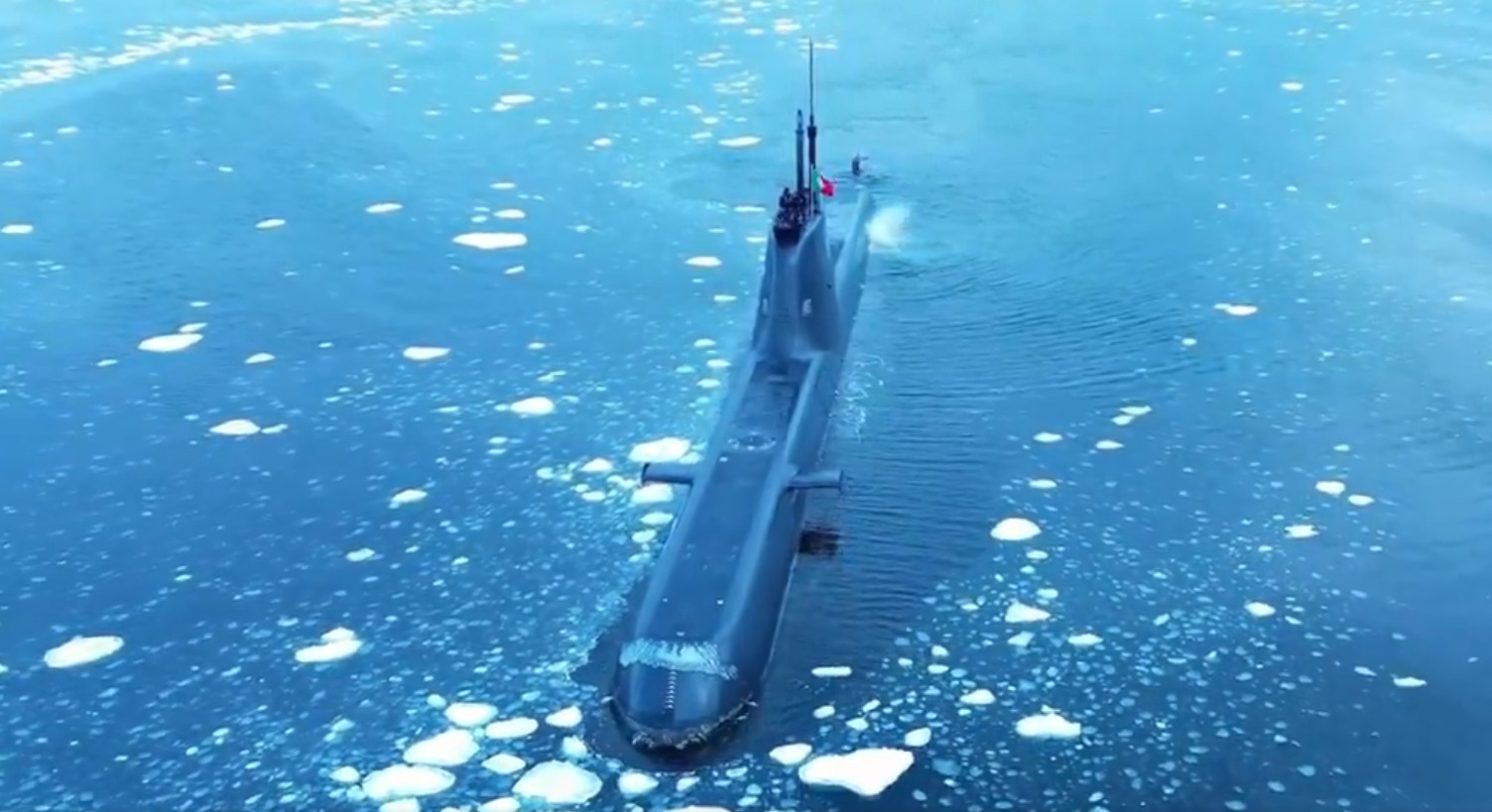A conventionally-powered Portuguese attack submarine manufactured by Germany’s Howaldtswerke-Deutsche Werft (HDW) recently concluded its first voyage under the Arctic ice. A German submarine has also been pitched to India for its Project 75I.
As per an official release from NATO, the Portuguese Tridente-class attack submarine, ‘Arpão,’ returned to her home base in Lisbon, Portugal, following a successful deployment under NATO’s Operation Brilliant Shield. The release noted, “Arpão is the first Portuguese submarine to navigate below Arctic ice, in a mission aimed at deterrence and defense of the Euro-Atlantic area.”
Arpão departed the Lisbon Naval Base on April 3 and spent 70 days on deployment, underscoring the utility of diesel-powered submarines. The deployment is significant since such missions are usually undertaken by nuclear-powered submarines.
The NATO statement noted that Arpão’s mission involved maintaining a vigil on military platforms operating in the Euro-Atlantic zone, including both surface and submarine platforms. The deployment, notably, comes as Russia has indicated it plans to expand its presence and influence in the Arctic region.
Portuguese Navy Cdr. Taveira Pinto said in a statement, “We have successfully achieved our objectives of surveillance and patrol in the North Atlantic, demonstrating the capabilities of this type of conventional submarine in Arctic conditions.”
🇵🇹 submarine Arpão returns to its home base in Lisbon after a 70 day #NATO mission, marking the first time a conventional submarine operated under the Arctic ice. NATO’s submarine fleet significantly reinforces the Alliance’s strategic & tactical advantage #WeAreNATO Read… pic.twitter.com/69kdvBu30L
— NATO Maritime Command (@NATO_MARCOM) June 26, 2024
Part of the two-strong Tridente class, Arpão (S161) was constructed. by Howaldtswerke-Deutsche Werft in Germany. It was the export-optimized Type 214 design.
The Tridente class is powered by an air-independent propulsion (AIP) system, which uses liquid oxygen and hydrogen fuel cells to charge its batteries. It has a submerged displacement of 2,020 tons and an arsenal of eight 533mm tubes for Black Shark torpedoes.
These submarines can stay underwater for extended periods — up to several weeks, depending on speed — because the AIP system doesn’t need fresh air to recharge its batteries.
These submarines are believed to be just as stealthy as nuclear-powered submarines and can pack torpedos for combat that are just as deadly as the ones carried by nuclear-powered submarines.

Germany leads globally in constructing small, stealthy submarines for coastal sea monitoring. These submarines offer significant cost savings compared to nuclear-powered submarines. The latest mission undertaken by Arpão may have just established their efficacy.
A dozen-odd German Type 214 export submarines have been licensed and constructed by shipyards worldwide. Countries like Greece, Portugal, and South Korea operate the Type 214, whereas Turkey has been building the submarines locally.
The submarine was also pitched to Indonesia and Pakistan, but both bids failed. Indonesia chose the French Scorpene-class submarines, and Pakistan dithered for a while and eventually went with its closest ally, China, choosing the Type 039A with AIP technology.
The submarine has since found a new potential customer: India. Similar to the previous two bids, the Indian bid also faces competition from Navantia, a Spanish company offering the S80 submarine with AIP technology.

German AIP Submarine For India
In November 2023, ThyssenKrupp AG offered India the bigger 214 version of HDW-class submarines. Six conventional diesel submarines are on offer for a $4.8 billion deal under Project 75I.
At that time, ThyssenKrupp official told the EurAsian Times: “The existing 214 is a standard design, which will need some modification to meet the (Indian) Navy’s requirements. It is not unusual. The Type 209s that India got from Germany in the mid-80s and built two of it in India were also modified to Indian specifications.”
The emphasis placed by the Indian government on “Made in India” suggests that the Indian Navy will select the bidder offering substantial technology transfer. The Indian Ministry of Defence (MoD) announced the tender in July 2023. It pointed out that in addition to providing the Air-Independent Propulsion (AIP) submarines, significant technology transfer to Indian shipyards was expected.
Spain’s Navantia, with its S80 submarine, is competing in the race. The Indian Navy team is conducting field evaluation trials of the AIP technology developed by Navantia at Cartagena.
The technology is yet to be fitted into the S80 submarine offered to the Indian Navy. Both manufacturers have teamed up with Indian firms: Navantia has teamed up with private shipyard Larsen and Toubro, while ThyssenKrupp has teamed up with Mumbai-based Mazagon Dock Shipbuilders Limited. Navantia has asserted that its submarine design meets ‘almost’ all the technical requirements of P-75I without any redesign.

The Indian Navy has yet to conduct its field evaluations of the submarine. The Navantia Chairman has said that the Spanish submarine offered to the Indian Navy had contemporary features and incorporated the latest technologies, such as Generation BEST AIP (Bio-ethanol stealth Technology) and an advanced sensor suite.
However, an anonymous source told the EurAsian Times that their AIP system is still at least three years from being exploited on an operational submarine. Until then, laboratory tests and simulations are the only means to make these claims.
This is where the German submarine has a clear advantage. The 214 being offered to India will be tailored to the requirements of the Indian Navy. It will be a derivative of the 214 class of submarines, with the latest enhancements in AIP technology. It will be equipped with a Lithium-ion battery, have an advanced sensor and combat system, and not compromise on stealth features.
Last month, reports indicated that the German government was planning to take stakes in Thyssenkrupp Marine Systems. Indian Navy representatives visited the manufacturer earlier this year for Field Evaluation Trials. Several sources confirmed to the Indian media that the trials satisfied all criteria.
- Contact the author at sakshi.tiwari9555 (at) gmail.com
- Follow EurAsian Times on Google News





